Related Research Articles

The Treaty of Nanking was an unequal treaty between Great Britain and the Qing dynasty of China to end the First Opium War (1839–1842), signed on 29 August 1842.

The Second Opium War, also known as the Second Anglo-Chinese War, the Second China War, the Arrow War, or the Anglo-French expedition to China, was a colonial war lasting from 1856 to 1860, which pitted the United Kingdom, France, and the United States against the Qing dynasty of China.

The Opium Wars were two conflicts waged between China and Western powers during the mid-19th century.
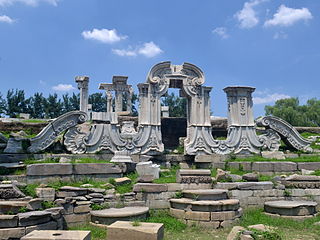
The Old Summer Palace, also known as Yuanmingyuan or Yuanmingyuan Park, originally called the Imperial Gardens, and sometimes called the Winter Palace, was a complex of palaces and gardens in present-day Haidian District, Beijing, China. It is 8 kilometres (5 mi) north-west of the walls of the former Imperial City section of Beijing. Widely perceived as the pinnacle work of Chinese imperial garden and palace design, the Old Summer Palace was known for its extensive collection of gardens, its building architecture and numerous art and historical treasures. Constructed throughout the 18th and early 19th centuries, the Old Summer Palace was the main imperial residence of the Qianlong Emperor of the Qing dynasty and his successors, and where they handled state affairs; the Forbidden City was used for formal ceremonies. The Garden was reputed as the "Garden of Gardens" in its heyday was "arguably the greatest concentration of historic treasures in the world, dating and representing a full 5,000 years of an ancient civilization", according to Robert McGee, chaplain to the British forces.

The Xianfeng Emperor, also known by his temple name Emperor Wenzong of Qing, personal name Yizhu, was the eighth emperor of the Qing dynasty, and the seventh Qing emperor to rule over China proper. During his reign, the Qing dynasty experienced several wars and rebellions including the Taiping Rebellion, the Nian Rebellion, and the Second Opium War. He was the last Chinese emperor to exercise sole power.
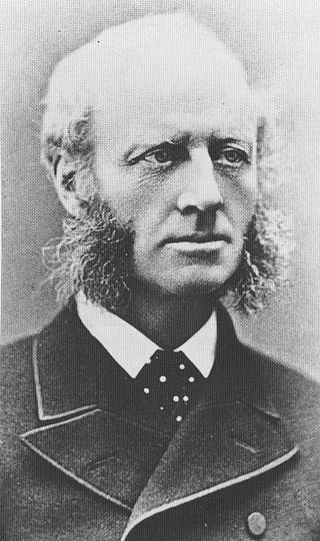
Sir Harry Smith Parkes was a British diplomat who served as Envoy Extraordinary and Minister Plenipotentiary and Consul General of the United Kingdom to the Empire of Japan from 1865 to 1883 and the Chinese Qing Empire from 1883 to 1885, and Minister to Korea in 1884. Parkes Street in Kowloon, Hong Kong is named after him.

Hong Kong (1800s–1930s) oversaw the founding of the new crown colony of Hong Kong under the British Empire. After the First Opium War, the territory was ceded by the Qing Empire to the United Kingdom of Great Britain and Ireland through Treaty of Nanjing (1842) and Convention of Peking (1860) in perpetuity. Together with additional land that was leased to the British under the Convention for the Extension of Hong Kong Territory (1898), Hong Kong became one of the first parts of East Asia to undergo industrialisation.

The Battle of Hong Kong, also known as the Defence of Hong Kong and the Fall of Hong Kong, was one of the first battles of the Pacific War in World War II. On the same morning as the attack on Pearl Harbor, forces of the Empire of Japan attacked the British Crown colony of Hong Kong around the same time that Japan declared war on Great Britain. The Hong Kong garrison consisted of British, Indian and Canadian units, also the Auxiliary Defence Units and Hong Kong Volunteer Defence Corps (HKVDC).
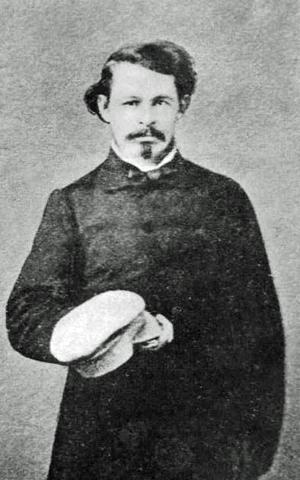
Frederick Townsend Ward was an American sailor and mercenary known for his military service in Imperial China during the Taiping Rebellion. He commanded the Ever Victorious Army, a joint Sino-foreign force, against the Taiping rebels. He remained in command of the Ever Victorious Army until his death in battle in 1862, after which leadership was taken over by Henry Andres Burgevine.

The Eight-Nation Alliance was a multinational military coalition that invaded northern China in 1900 during the Boxer Rebellion, with the stated aim of relieving the foreign legations in Beijing, which was being besieged by the popular Boxer militiamen, who were determined to remove foreign imperialism in China. The allied forces consisted of about 45,000 troops from the eight nations of Germany, Japan, Russia, Britain, France, the United States, Italy, and Austria-Hungary. Neither the Chinese nor the quasi-concerted foreign allies issued a formal declaration of war.

Chinese-United Kingdom relations, more commonly known as British–Chinese relations, Anglo-Chinese relations and Sino-British relations, are the interstate relations between China and the United Kingdom.

The Battle of Palikao was fought at the bridge of Baliqiao by Anglo-French forces against the Qing Empire during the Second Opium War on the morning of 21 September 1860. It allowed Western forces to take the capital Beijing and eventually defeat the Qing Empire.

The Third Battle of Taku Forts was an engagement of the Second Opium War, part of the British and French 1860 expedition to China. It took place at the Taku Forts near Tanggu District, approximately 60 kilometers (36 mi.) southeast of the city of Tianjin (Tientsin).
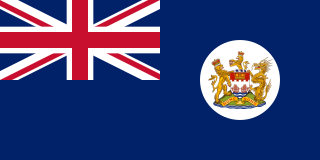
Hong Kong was a colony and later a dependent territory of the United Kingdom from 1841 to 1997, apart from a period of Japanese occupation from 1941 to 1945 during the Pacific War. The colonial period began with the British occupation of Hong Kong Island in 1841, during the First Opium War between the British and the Qing dynasty. The Qing had wanted to enforce its prohibition of opium importation within the dynasty that was being exported mostly from British India and was causing widespread addiction among the populace.
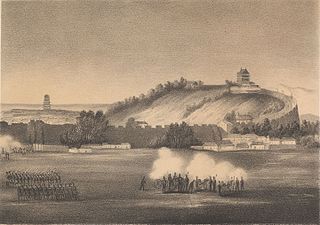
The Battle of Canton was fought by British and French forces against Qing China on 28–31 December 1857 during the Second Opium War. The British High Commissioner, Lord Elgin, was keen to take the city of Canton (Guangzhou) as a demonstration of power and to capture Chinese official Ye Mingchen, who had resisted British attempts to implement the 1842 Treaty of Nanking. Elgin ordered an Anglo-French force to take the town and an assault began on 28 December. Allied forces took control of the city walls on 29 December but delayed entry into the city itself until 5 January. They subsequently captured Ye and some reports state they burnt down much of the town. The ease with which the allies won the battle was one of the reasons for the signing of the Treaty of Tientsin in 1858.
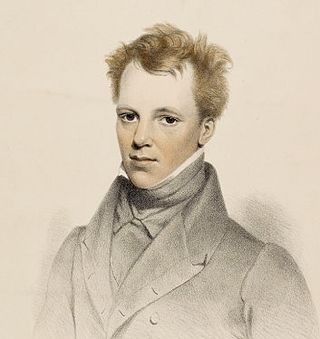
Robert Thom was an English nineteenth century Chinese language translator and diplomat based in Canton who worked for the trading house Jardine, Matheson & Co. and was seconded to the British armed forces during the First Opium War (1839 – 1842). For his literary works Thom used Sloth as a nom de plume.
Lo Man-wai CBE was a prominent lawyer and politician in Hong Kong who served as a member of the Executive Council and Legislative Council of Hong Kong.

China participated in World War I from 1917 to 1918 in an alliance with the Entente Powers. Although China never sent troops overseas, 140,000 Chinese labourers served for both British and French forces before the end of the war. While neutral since 1914, Tuan Ch'i-jui, Premier of the Republic of China, spearheaded Chinese involvement in World War I. Tuan wanted to integrate China with Europe and the United States by declaring on the side of the Allies against the Central Powers. On 14 August 1917, China ended its neutrality, declaring war on the German Empire and the Austro-Hungarian Empire.

The British colony of Hong Kong saw no military action during World War I (1914–1918). The biggest external threat to the colony was perceived to be the German East Asia Squadron, but the squadron was eliminated in December 1914. Nonetheless, the colony served as an important port in East Asia, including as the headquarters of the British China Station, and saw significant socioeconomical changes during the war.
The Submarine Mining Service was a branch of the British Army's Corps of Royal Engineers between 1871 and 1906. They were responsible for defending ports and rivers by naval mines and torpedoes. Overseas detachments served in British colonies and dominions. The service disbanded after the Committee of Imperial Defence considered that harbour defence duties were better suited to the submarine fleet of the Royal Navy.
References
- 1 2 "Opium Wars". Britannica. Retrieved 13 October 2022.
- 1 2 3 4 5 6 7 Kwong, Chi Man (10 February 2022). Hong Kongers in the British Armed Forces, 1860-1997. Oxford University Press. p. 16. ISBN 978-0-19-284574-0.
- 1 2 3 4 Kwong, Chi Man (10 February 2022). Hong Kongers in the British Armed Forces, 1860-1997. Oxford University Press. p. 17. ISBN 978-0-19-284574-0.
- 1 2 3 Kwong, Chi Man (10 February 2022). Hong Kongers in the British Armed Forces, 1860-1997. Oxford University Press. p. 18. ISBN 978-0-19-284574-0.
- ↑ Bickers, Robert; Howlett, Jonathan J. (16 July 2015). Britain and China, 1840-1970: Empire, Finance and War. Routledge. p. 107. ISBN 978-1-317-41903-7.
- 1 2 3 Kwong, Chi Man (10 February 2022). Hong Kongers in the British Armed Forces, 1860-1997. Oxford University Press. p. 19. ISBN 978-0-19-284574-0.
- 1 2 3 4 Kwong, Chi Man (10 February 2022). Hong Kongers in the British Armed Forces, 1860-1997. Oxford University Press. p. 20. ISBN 978-0-19-284574-0.
- 1 2 3 Kwong, Chi Man (10 February 2022). Hong Kongers in the British Armed Forces, 1860-1997. Oxford University Press. p. 21. ISBN 978-0-19-284574-0.
- ↑ China : Being a Military Report on the North-eastern Portions of the Provinces of Chih-li and Shan-tung, Nanking and Its Approaches, Canton and Its Approaches: Together with an Account of the Chinese Civil, Naval and Military Administrations, and a Narrative of the Wars Between Great Britain and Chine. Government Central Branch Press. 1884. pp. 28–.
- ↑ Kwong, Chi Man (10 February 2022). Hong Kongers in the British Armed Forces, 1860-1997. Oxford University Press. p. 23. ISBN 978-0-19-284574-0.
- ↑ Kwong, Chi Man (10 February 2022). Hong Kongers in the British Armed Forces, 1860-1997. Oxford University Press. pp. 28–30. ISBN 978-0-19-284574-0.